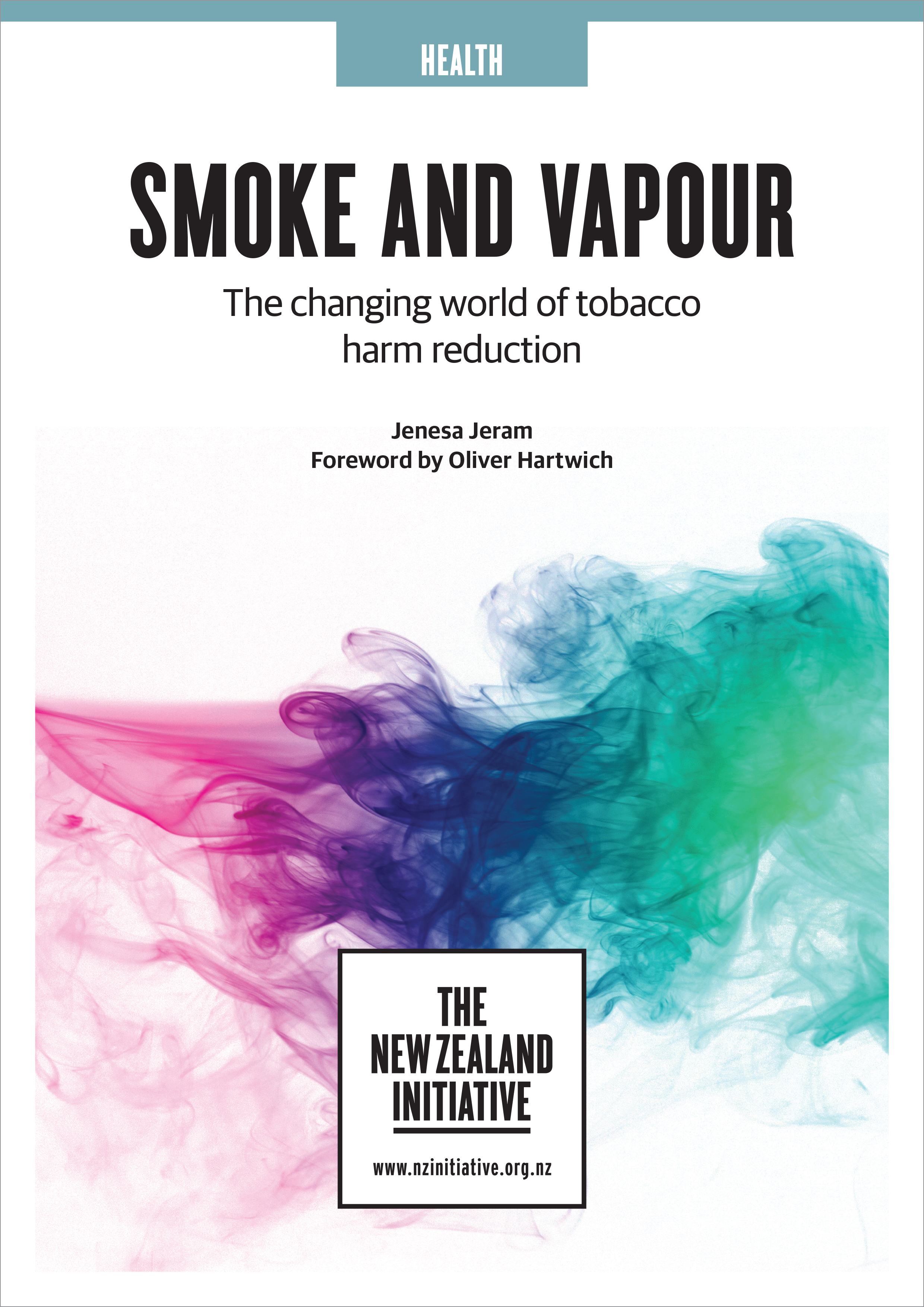Tobacco policy in New Zealand has traditionally neglected the needs of smokers. The good news is that youth uptake of smoking has significantly declined. The bad news is that the current approach is not as effective in helping smokers become ex-smokers. If the government wants to achieve its ‘Smokefree by 2025’ aspiration (reduce smoker prevalence to 5% of the population), more support will be needed to help smokers quit.
Nicotine without smoke
Vaping – the action of inhaling and exhaling e-cigarette vapour – is already a regular sight around New Zealand despite the regulatory grey area nicotine e-cigarettes and e-liquids occupy.
Though some public health experts were originally sceptical, vaping now receives broad public health support. It is now widely accepted that ‘people smoke for the nicotine but they die from the tar’. Vaping also boasts greater consumer acceptability than other forms of quit-smoking methods, where the process of quitting can be enjoyable rather than endured.
What many New Zealanders may not realise is that e-cigarettes are just one of many nicotine delivery products available overseas that are helping smokers to cut down or quit smoking.
Smoke and Vapour describes two additional products:
Swedish snus (reformulated tobacco pouches placed under the gum) and heat-not burn products (reformulated tobacco heated to release nicotine and flavour) that might help get New Zealand ‘Smokefree by 2025’.
Different products and methods for quitting smoking work for different smokers. Smokers deserve to have access to a range of products that reduce the harms of smoking and could help them quit smoking entirely.
The perfect (harm elimination) is the enemy of the good (harm reduction)
Tobacco harm reduction recognises that abstinence-only policies poorly serve smokers who cannot or do not want to quit. Smoke and Vapour describes the range of reasons people continue to smoke, and finds that there are many pathways smokers take in their quitting journey.
Given the range of punitive policies (like rising tobacco excise) that are already in place, it is time for a compassionate approach where smokers can satisfy their nicotine dependence while reducing the harm they experience.
Communication of the risks involved with alternative nicotine delivery products must be proportionate and should be equally balanced with messages of potential benefits. The most damaging message public health experts can give potential quitters is that they ‘might as well smoke’.
Over-regulation is counterproductive
Though enabling access to alternative nicotine products is an important first step, Smoke and Vapour also warns against applying combustible tobacco-style regulations to these products. Doing so would be counterproductive to harm reduction goals.
Inappropriate restrictions to these products include:
• Introducing an overly burdensome regulatory regime like the US Food and Drug Administration which limits access to these products and can discourage market competition.
• Limiting flavours of e-cigarettes on the basis that flavours that appeal to adults might also appeal to children.
• Applying advertising restrictions and standardised packaging that can reduce the uptake of less harmful products by smokers by limiting the information they receive.
• Limiting retail outlets where these products can be sold to only specialist stores and pharmacies.
• Extending smoke-free areas to vaping, thus misrepresenting the relative risks of these products compared with smoking.
• Applying tobacco excise to discourage use of less harmful products (and therefore discourage smokers from switching); or to raise government revenue.
A ‘light-touch’ approach to regulation can encourage healthy market competition where manufacturers compete on reducing risks, making products affordable, and providing a satisfactory experience to consumers.
A timely report
This report coincides with two important developments in the regulatory space. Labour will be facing pressure to clarify its position on e-cigarettes and other nicotine delivery products.
The first development regards a court judgment which ruled that the tobacco in heat-not-burn products can legally be sold in New Zealand. Crucially, the judge pointed out that banning the product would be contrary to the purposes of the Smokefree Environments Act 1990, which is to reduce the harms of smoking and the harmful constituents in tobacco products and smoke.
The second development regards a members’ bill by Opposition MP Hon Nicky Wagner. The bill proposes to legalise the sale of nicotine e-cigarettes, albeit with more restrictions (particularly on advertising and the extension of smoke-free zones) than the status quo. Smoke and Vapour argues that before introducing new restrictions and regulations, policymakers should first observe and respond to what is and is not working in the current self-regulatory environment.
Retailers need certainty that they will not be prosecuted for partaking in ‘illegal activity’, and consumers need confidence that they are not doing something undesirable. In a society where smoking has been socially marginalised, no doubt helped by rigorous public health campaigns, vaping should be incentivised as a more attractive option.
Click here to download the two-page report summary of Smoke and Vapour: the changing world of tobacco harm reduction.
About the author
Jenesa Jeram is a Research Fellow at The New Zealand Initiative, focusing mainly on social issues and lifestyle regulations. She is the author of Health of the State, a report that looks at the evidence and ideology behind public health and lifestyle regulations. She has an interest in sugar tax regulations, and has also co-authored publications on poverty, inequality, social impact bonds, economic growth and housing.
She has a Bachelor of Arts with first class Honours from the University of Otago, majoring in Politics, Philosophy and Economics.




